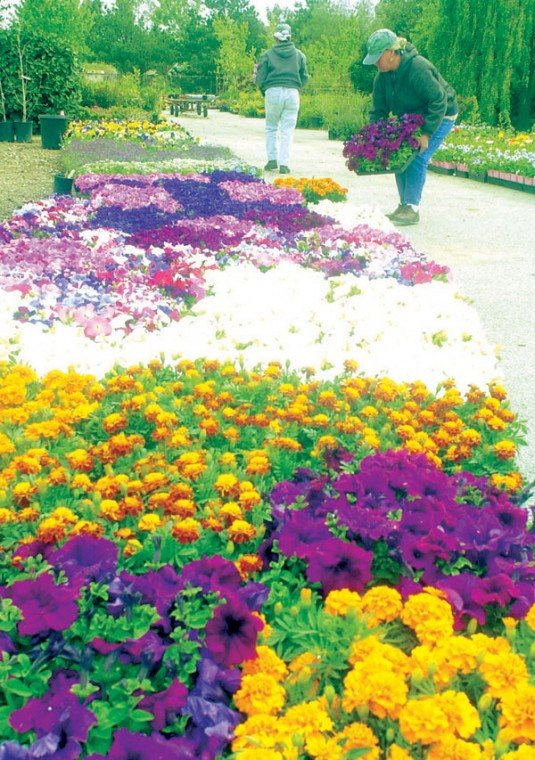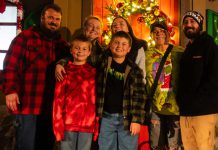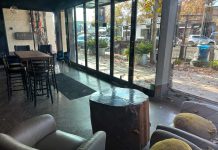SAN MARTIN
– Call it the end, of an era, anyway, for one of the staples in
the South Valley’s horticulture tradition.
SAN MARTIN – Call it the end, of an era, anyway, for one of the staples in the South Valley’s horticulture tradition.
The Saratoga Horticulture Research Foundation, which called a three-acre piece of land near Monterey Road in San Martin home for two decades, is selling its land while pondering the next step in its goal of benefitting California growers.
While the foundation is by no means gone, the fact that it will no longer take part in the creation of new plants for California is bittersweet.
“It is to me; I’m a grower” said Don Dillon Sr., president of the foundation’s board. “It’s not something you go into lightly.”
While the property is currently in escrow as the foundation hopes to sell to someone interested in a nursery at the site, the foundation board is discussing how money from the sale of the land will go to advancements in horticulture. Dillon said he is not sure where the organization will be based.
“Where we plan to go from here is still up in the air,” he said. “The nature of the thing will change. We could become a foundation that makes grants rather than ask for them.
“There’s a number of things we can do for the industry,” he continued. “We think there is a place for many other needs.”
While the decision wasn’t easy, the reasons for closing down its operations in San Martin are simple – the foundation, which for more than 50 years focused on developing new species of plants for gardens across California, simply couldn’t keep up with an industry that has become more mass produced.
“We spent too much time trying to keep it funded and not on the plants,” he said. “The world has changed. Globalization changes everything, whether it’s the cleaner, coffee shops, drugstores, it’s tough to avoid the mass merchandising.
“Big corporations can grow their own (new plant varieties). When it’s truly being mass produced, the cost goes down. We’re just a little tiny piece of what’s happening in California.”
Regardless, the foundation leaves a lasting legacy and fond memories for some of the grower’s longtime members.
“It has a large and notable history of people helping,” Dillon said. “It needs a history book written.”
The foundation began in Saratoga in 1952 under the goal of developing stable shade trees that would add new color to California’s green-and-gold seasons.
“One of the goals that evolved was a need for fall color in California,” he said. “There was a need to create plants that not everybody had.”
The foundation found ways to add to that color by developing liquid amber and ginko trees that quickly spread to other nurseries.
From there, hundreds of varieties of trees, plants and flowers were developed at the research facility.
“There were a lot of trees that came out of Saratoga,” Dillon said.
And all along, the foundation was a shining example of an independent organization having a major effect on an industry, staying alive with donations, grants and plant sales.
“They couldn’t have anything more independent than the Saratoga Foundation,” he said. “It wasn’t tied to any organization, any university, any school. This, in turn, has had a conflict with (competition).”
Some critics over the years claimed that the nonprofit agency offered unfair competition.
Regardless, the foundation has often struggled to make ends meet.
“It struggled for funding for years,” said Dillon, who added that the facility moved to San Martin in 1984 because it was short on funding and found that selling the Saratoga site would be a smart financial decision. The facility, which once was surrounded by open space, all of a sudden was surrounded by people and developing properties. The value of the land skyrocketed, and the foundation decided to sell its land to make money and move to San Martin.
Unfortunately, the foundation’s best asset – its ability to develop new, useful plants – was something that it more or less gave away to anyone willing to buy a plant.
“Essentially, we did,” said Dillon, who said that getting patents on new plants is a difficult task and enforcing them is nearly impossible. “We might have sold the plants, but anyone who bought it could reproduce it. So then everybody’s growing it.”
For more information on the Saratoga Horticulture Research Foundation, visit www.saratogahortfoundation.org.














